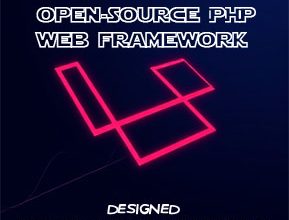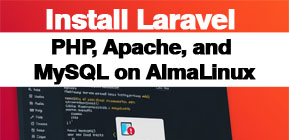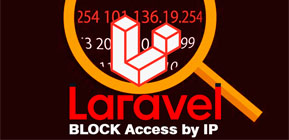Introduction to Laravel
Laravel is a popular open-source PHP web framework designed for building modern, robust, and scalable web applications. It follows the Model-View-Controller (MVC) architectural pattern, which separates the application logic, user interface, and data layers. Laravel is known for its elegant syntax, developer-friendly features, and extensive ecosystem, making it a top choice for PHP developers.
Key Features of Laravel:
- Eloquent ORM: A powerful object-relational mapper (ORM) that simplifies database interactions.
- Blade Templating Engine: A lightweight yet powerful templating engine for creating dynamic views.
- Artisan CLI: A command-line interface for automating repetitive tasks and generating boilerplate code.
- Migrations and Seeding: Tools for managing database schema changes and populating databases with test data.
- Routing and Middleware: Flexible routing system and middleware for handling HTTP requests.
- Security: Built-in features like CSRF protection, encryption, and authentication.
- Testing: Support for unit testing and PHPUnit integration.
- Laravel Ecosystem: Tools like Laravel Forge, Envoyer, Horizon, and Nova for deployment, task management, and administration.
How to Get Started with Laravel
- Install PHP and Composer:
- Laravel 11 requires PHP (>= 8.0) and Composer, a dependency manager for PHP.
- Install PHP and Composer on your system.
# For Ubuntu Servers sudo apt-get install openssl php-bcmath php-curl php-json php-mbstring php-mysql php-tokenizer php-xml php-zip See Server Requirements - Install Laravel:
- Use Composer to create a new Laravel project:
composer create-project --prefer-dist laravel/laravel project-name
- Use Composer to create a new Laravel project:
- Set Up the Environment:
-
Configure the
.envfile with your database credentials and other settings.
-
-
Run the Development Server:
-
Start the built-in development server:
php artisan serve
-
Visit
http://localhost:8000in your browser to see the Laravel welcome page.
-
-
Explore the Documentation:
-
Laravel’s official documentation is comprehensive and beginner-friendly. Visit Laravel Docs.
-
When to Use Laravel
Laravel is ideal for:
-
Building web applications with complex backend logic.
-
Rapid application development (RAD) due to its built-in tools and features.
-
Projects requiring robust authentication, API development, or real-time features (via Laravel Echo).
-
Applications that need scalability and maintainability.
It may not be the best choice for:
-
Extremely simple websites or static pages (use plain PHP or a lightweight framework).
-
Projects with very specific performance requirements (consider micro-frameworks like SlimPHP or Lumen).
Laravel vs. Other Frameworks
Laravel vs. CakePHP:
-
Laravel:
-
More modern and feature-rich.
-
Better documentation and community support.
- Security in built-in
-
Eloquent ORM is more intuitive than CakePHP’s ORM.
-
Considered faster due to its routing efficiency.
- Requires frontend tools (e.g., Vue.js, React) for modern UIs.
-
-
CakePHP:
-
Simpler and easier to learn for beginners.
-
No reconfiguration is required.
- Offers robust database integration.
-
Built-in tools for rapid development and code generation.
-
Integration Support and Documentation
Integration Support:
- Laravel integrates seamlessly with popular frontend frameworks like Vue.js, React, and Angular.
- It supports third-party libraries and packages via Composer.
- Laravel Mix simplifies asset compilation (CSS, JS) using Webpack.
- APIs can be built easily with Laravel Sanctum or Passport for authentication.
- Laravel’s official documentation is one of the best in the industry, covering everything from installation to advanced features.
- The Laravel community is active on platforms like GitHub, Stack Overflow, and Laracasts.
- Laracasts offers video tutorials for beginners and advanced users.
- Forums and Discord channels provide additional support.
Conclusion
Laravel is a powerful and versatile PHP framework that simplifies web application development. Its rich feature set, elegant syntax, and strong community support make it a top choice for developers. While it may have a slight learning curve and performance overhead, its benefits far outweigh the drawbacks for most projects. Whether you’re building a small application or a large-scale system, Laravel provides the tools and flexibility to get the job done efficiently.
Join the Newsletter
Sign up for our personalized daily newsletter



